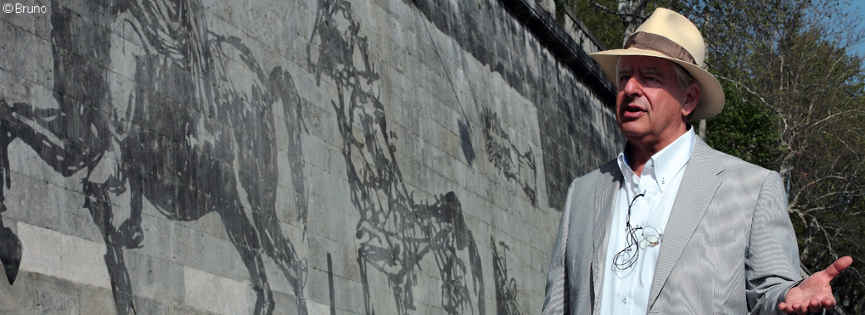You are in:
Laureates
Start of main content
William Kentridge
Princess of Asturias Award for the Arts 2017

William Kentridge was born in Johannesburg, South Africa in 1955. His parents were both lawyers specialized in defending the victims of apartheid. Sir Sydney Kentridge played a leading role in cases such as the Treason Trial as counsel for the defence of Nelson Mandela. This circumstance shaped his university education before he devoted himself entirely to art.
Kentridge studied Politics and African Studies at the University of the Witwatersrand, where he graduated in 1976. He subsequently enrolled in Fine Arts at the Johannesburg Art Foundation. He moved to Paris in the eighties to study theatre at the Jacques Lecoq International Theatre School and worked as an artistic director in television series before beginning to create animations from his own drawings. Since the nineties, he has combined the practice of drawing with film and theatre, becoming a multidisciplinary artist who has also cultivated scenography, collage, engraving, sculpture and video art.
A meticulous and profound creator, William Kentridge has chosen drawing as a vehicle for expressing emotions and metaphors related to South African history and its socio-political reality. He became known abroad after his participation in the documenta X art exhibition held in Kassel (Germany, 1997) and in the São Paulo (Brazil, 1998) and Venice (Italy, 1999) biennials. Since then, his cartoons or “hand-drawn films”, as some specialists call them, have been shown in the halls of the most prestigious art centres on the international circuit. Unlike other animation techniques, his consists in the filming of drawings that he modifies again and again, erasing and adding strokes of Expressionist inspiration, according to experts, by means of a monochrome palette with slight touches of pastel blue or red.
The engravings of what is known as the Pit series, almost thirty monotypes or unique prints made in the seventies, and of the so-called Domestic Scenes, fifty small format engravings produced in the eighties, built the foundation on which his charcoals and later animations rest. Among these, Johannesburg, 2nd Greatest City After Paris (1989) and Felix in Exile (1994) stand out for the introduction of two characters, Soho Eckstein and Felix Teitlebaum, through whom he portrays suffering, domination, guilt, time and memory, leading themes in his oeuvre. The self-portrait and autobiographical references are habitual in works like Automatic Writing (2003).
Starting in 2003, Kentridge began to be interested in sculpture and video installations and to include references to theatre, opera and film in his new works. Over the past decade, he has shown his artistic production at the MoMA (New York), which gave him a retrospective in 2010, the Albertina Museum (Vienna), the Louvre (Paris) and the Museum of Fine Arts in Budapest, among other museums. In 2016, he founded the Centre for the Less Good Idea in Johannesburg, a “space” given over to the artistic creation of cross-disciplinary projects.
Awarded the Kyoto Prize (Japan, 2010) and the Dan David Prize (Israel, 2012), Kentridge is an honorary member of the American Academy of Arts and Letters and holds honorary degrees from Yale University (USA) and the University of Cape Town (South Africa). In 2013, he was named Chevalier of the French Order of Arts and Letters.
End of main content
Sección de utilidades
Fin de la sección de utilidades
- Legal document Legal document (Access key 8)
- | Privacy policy Privacy policy (Access key )
- | Social networks ???en.portal.pie.menu107.title???
- | Cookies ???en.portal.pie.menu110.title???
- | Site map Site Map (Access key 3)
- | Contact Contact (Access key )
- | XHTML 1.0
- | CSS 2.1
- | WAI 'AA
© Copyright 2024. FUNDACIÓN PRINCESA DE ASTURIAS
 MINUTES OF THE JURY
MINUTES OF THE JURY


